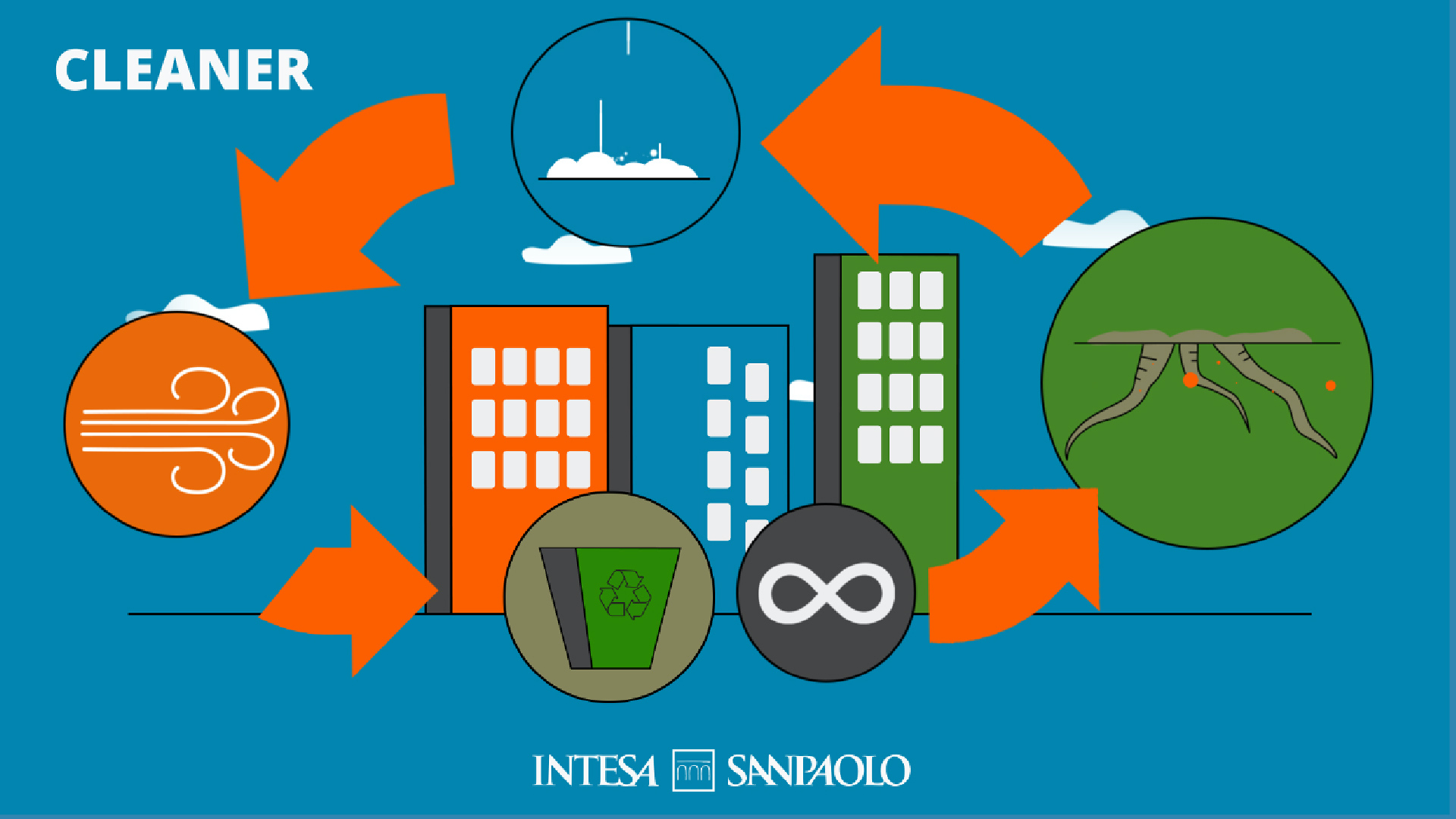Sustainability
Finance will drive the move to a Circular Economy
Watch our film to learn more about how we’re supporting the transition.
The Circular Economy will see traditional businesses transform the way they work and opportunities emerge from new, more sustainable practices.
It won’t happen overnight but small steps can lead to big changes. For example, if smartphones were designed to last just one year longer, the benefit to the environment would be the same as taking a million cars off the roads.
The transition to a Circular Economy would be impossible without the backing of finance. Intesa Sanpaolo is supporting businesses to improve sustainability practices. It is the first strategic financial services partner of the Ellen MacArthur Foundation, an organisation committed to making the Circular Economy a global reality.
We have already created a €6 billion Circular Economy plafond. This credit facility has been supporting businesses working in a circular way since 2018. We have also launched an award-winning sustainability bond.
What will business in a Circular Economy look like?

It will be cleaner, more competitive and more resilient. For example, products could be made by recycling materials already in use meaning fewer primary materials will need to be extracted.
Because of this, business will be more resilient and less affected by fluctuations in the availability of resources. Research tells us that, through the Circular Economy, industry can reduce the use of primary materials, such as metals and chemicals, by 32 per cent by 2030 and 53 per cent by 2050.
Alternative business models such as pay-per-use will become prevalent and new business models will emerge. With the support of finance, entirely new sectors will start to grow. Intesa Sanpaolo recently announced it is extending its Circular Economy funding plafond by €1 billion, meaning a total of €6 billion has been made available to businesses hoping to move to circular ways of working. Companies of any size can apply to benefit from the fund and the lower interest rates offered for working on circular projects.
The Circular Economy will change things for the better. By 2030 the disposable income of European households could be as much as 11 percentage points higher if we choose to follow a circular model. Combined savings for businesses that become circular will be as much as €600 billion a year.
Watch the film to find out more about how finance will help the Circular Economy become a reality.
Video references:
The benefit to the environment would be the same as taking a million cars off the roads
EEB (2019) Coolproducts don’t cost the earth – full report.
www.eeb.org/coolproducts-report, p15
Savings for businesses that become circular will be as much as €600 billion a year by 2030
https://www.mckinsey.com/business-functions/sustainability/our-insights/mapping-the-benefits-of-a-circular-economy
Last updated 8 May 2024